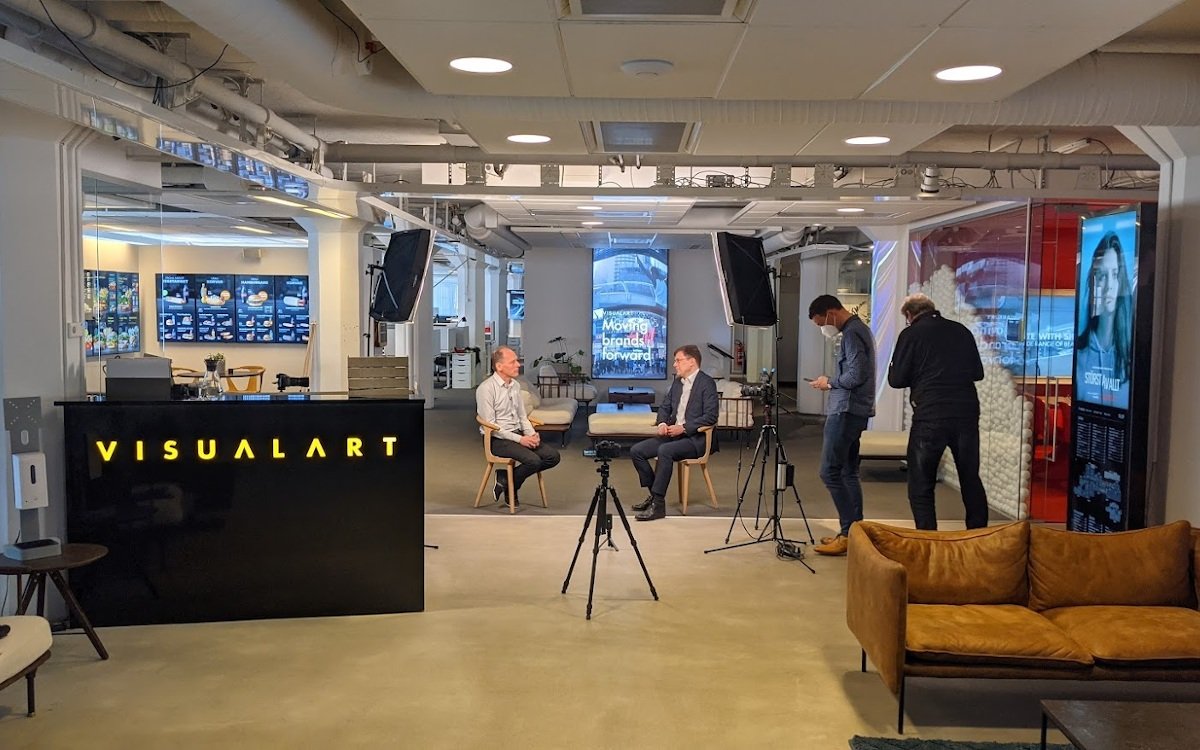Last week Visual Art launched the Visual Art Signage Player, a new digital signage software platform. Visual Art CEO Anders Apelgren explains in an invidis background interview which strategy Visual Art is pursuing, how complex the development of a modern CMS is and why a cloud-based platform is indispensable.
For the users of the almost 50,000 Visual Art licences, hardly anything will change, but under the „bonnet“ everything is new. As invidis reported, Visual Art launched a new digital signage CMS platform since this week – as a true SaaS on Azure. The switch to the public cloud and the associated system architecture decision for AWS, Microsoft Azure or Google Cloud is still ahead for most CMS providers. At Visual Art, they are now announcing that the move is complete.
From the point of view of the Stockholm-based digital signage provider, the reasons are quite simple: „We serve customers from North America to Australia. There is no way around a cloud-based, highly scalable and high-performance system architecture. Our CMS platform Visual Art Signage Player is now a global solution.“
And a few more practical reasons have promoted the decision in favour of Azure: „Software developers are in high demand and they prefer to develop for modern cloud platforms like Azure or AWS today“. In addition, digital signage concepts are becoming more data-heavy and computationally intensive – keyword AI. „And that’s where AWS, Azure & Co are the best solution.“ And the development is faster, more secure and cheaper – the new development on Azure platform cost just half a million euros. „Of course, we left User Frontend practically unchanged, which makes the switch very easy.“ And thanks to the cloud platforms, Visual Art doesn’t have to develop every basic feature itself. „There is a lot ready off the shelf, proven a hundred million times over.“.
When launching the new new Visual Art Signage Player platform – which development cost only around half a million euros – the full service integrator took the opportunity to also adapt its business model. Soon 3rd party integrators and end customers will also be able to purchase the CMS solution directly, only as a software subscription and as a bundle with a display. Visual Art is thus responding to requests from the market – especially in combination with Samsung Tizen. Major customers such as McDonalds in Scandinavia, the convenience store chain 7-Eleven and the world’s largest QSR restaurant chain are already operating their networks on Visual Art software and Samsung SoC.
The Visual Art signage player will also be upgraded remotely at all existing customers by the end of the year. The customers should be affected as little as possible. Since 100% of Visual Art’s licences have been running as subscriptions for years, the changeover to the cloud-based platform does not change anything for customers in terms of price. A stroke of luck for Visual Art – because the switch to subscription is often a delicate moment in the customer relationship.

